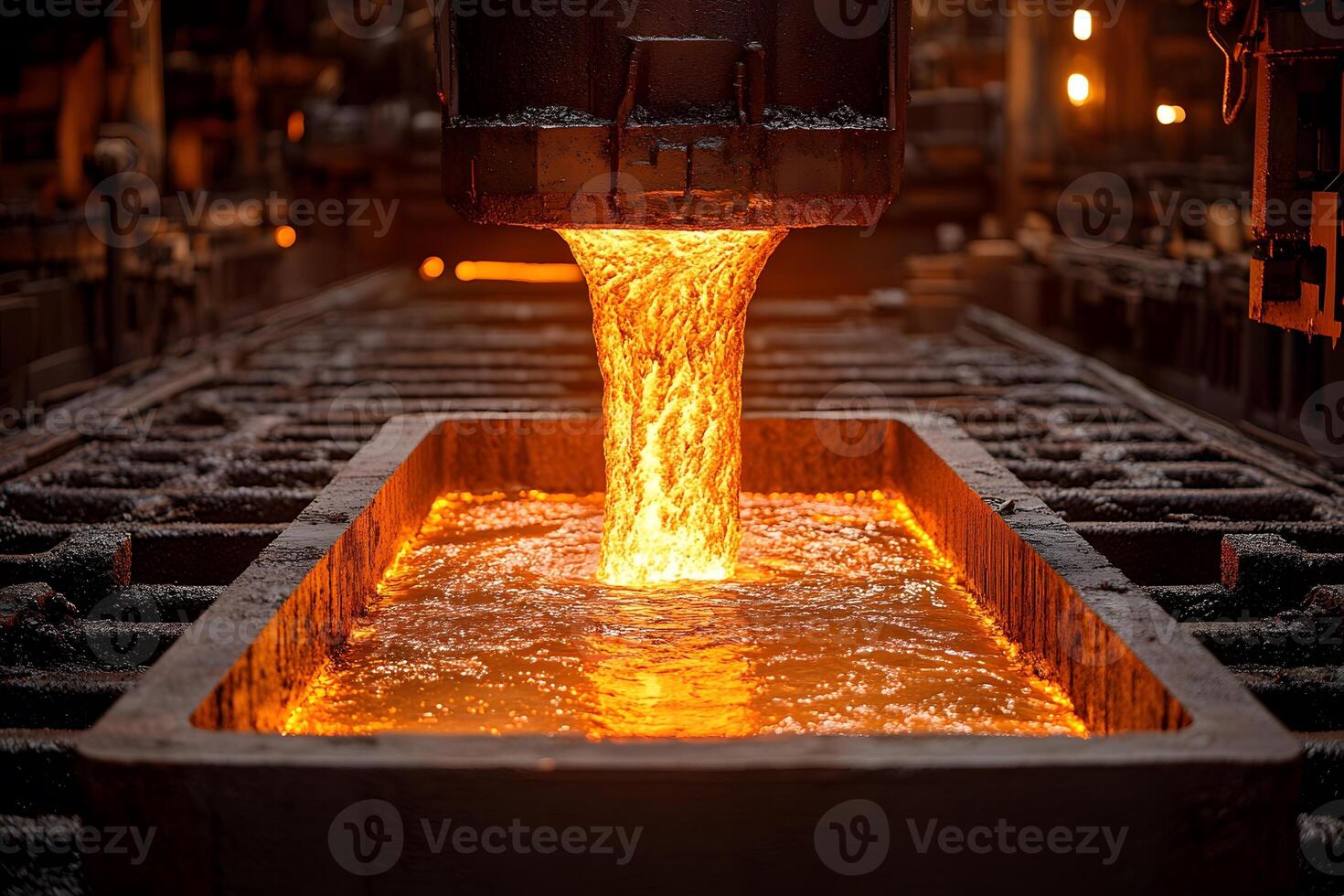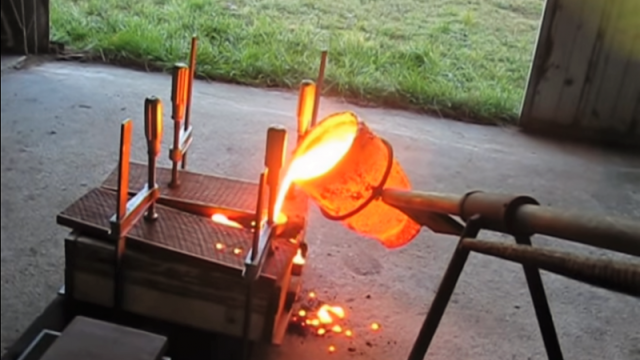Understanding the Aluminum Casting Process: A Modern Perspective
Wiki Article
Checking out the Art of Metal Casting: Methods and Applications in Modern Foundries
Metal casting is a time-honored craft that combines virtuosity with engineering accuracy. From old strategies to contemporary developments, this procedure has evolved substantially. Different methods, such as sand casting and lost-wax casting, display the flexibility of the medium. Meanwhile, technologies like 3D printing are improving exactly how foundries operate. As the lines in between performance and creativity blur, one need to take into consideration how these advancements influence both modern applications and traditional practices. What exists in advance in this progressing landscape?The Basics of Metal Casting
Metal casting, a pivotal procedure in production, involves pouring liquified metal right into a mold to achieve a wanted form. This method functions as a structure in the manufacturing of intricate metal components throughout various industries. Crucial element of steel casting include the choice of products, which can range from light weight aluminum to steel, each chosen for its details homes and application suitability. The procedure starts with mold creation, which can be made from sand, metal, or ceramics, depending upon the casting technique used. The liquified metal is then carefully put right into the mold and mildew, where it cools down and strengthens. Vital aspects such as temperature control, cooling rate, and mold and mildew style greatly impact the last product's high quality and attributes. Additionally, understanding the chemical and physical properties of the metal aids in enhancing casting efficiency, ultimately boosting the efficiency of the manufacturing procedure and guaranteeing top quality result tailored to particular requirements.Typical Casting Methods
Traditional casting strategies encompass a selection of approaches that have stood the test of time, showing their effectiveness in generating detailed steel elements. One famous technique is sand casting, which utilizes a mix of sand and a bonding agent to produce mold and mildews. The adaptability of sand casting permits the production of varied shapes, making it suitable for both massive and small-scale production. One more noteworthy strategy is investment casting, commonly used for specific and complicated geometries. This method entails producing a wax pattern that is covered in a ceramic shell, which is after that heated up to remove the wax, leaving a tooth cavity for molten steel. In addition, die casting is utilized for high-volume manufacturing, where liquified metal is infused right into recyclable metal mold and mildews. Each of these standard techniques stays pertinent, showcasing the workmanship and ability inherent in the art of metal casting, while satisfying the demands of numerous industries.Modern Innovations in Metal Casting
As sectors evolve, innovations in steel casting are reshaping manufacturing procedures and enhancing effectiveness. Advanced technologies such as 3D printing and computer-aided layout (CAD) are transforming mold and mildew creation, enabling detailed designs that were previously unattainable. These techniques facilitate rapid prototyping, minimizing preparations and fostering creative thinking in product growth.Additionally, the combination of automation and robotics in shops is enhancing operations, minimizing human error, and raising safety. Smart additional info sensors and real-time surveillance systems make it possible for precise control of temperature and product buildings, guaranteeing greater quality results.
Moreover, lasting practices are emerging, with making use of recycled products and energy-efficient heaters, minimizing ecological effect. The adoption of composite products and advanced alloys is also expanding the opportunities of steel casting, resulting in stronger and lighter components. In general, these contemporary technologies are changing steel casting right into a much more reliable, precise, and environmentally liable sector.
Applications Throughout Various Industries

While varied markets progressively rely upon metal casting, the method's adaptability plays a vital role in meeting details application demands. In the automotive field, metal casting is necessary for producing engine components, transmission housings, and other detailed parts that require accuracy and durability. The aerospace market advantages from light-weight casted parts, making certain both performance and gas efficiency. Additionally, the building industry utilizes steel casting for architectural elements, such as beams and supports, enhancing the stability of structures and bridges.
Moreover, the power industry utilizes steel casting for wind turbine blades and various other significant machinery that must withstand severe problems. Medical devices additionally see applications of metal casting, particularly in surgical tools and prosthetics, where precision is essential - Aluminum Casting. In general, the adaptability and reliability of metal casting make it indispensable throughout various fields, adding to the innovation of technology and framework in contemporary society
The Artistic Side of Metal Casting
Often connected with industrial applications, steel casting also discovers its area in the domain name of art, where proficient artisans transform liquified steel right into complex designs and expressive sculptures. This imaginative side of metal casting incorporates diverse methods, including sand casting, lost-wax casting, and financial investment casting, each offering distinct opportunities for creative thinking. Musicians make use of these techniques to create jobs that range from abstract kinds to realistic representations, permitting personal expression and commentary on contemporary issues.
Frequently Asked Questions
What Safety Actions Are Necessary in a Metal Casting Foundry?
Necessary precaution in a steel casting factory include find out here now personal protective equipment, appropriate air flow, emergency methods, training in taking care of liquified metals, regular devices upkeep, and clear interaction of threats to guarantee employee safety and health. Metal Casting.How Do Ecological Rules Effect Metal Casting Processes?
Environmental guidelines substantially influence metal casting processes by mandating using cleaner innovations, decreasing exhausts, and promoting waste administration techniques. Conformity commonly requires financial investments in devices, training, and modifications to existing treatments to minimize ecological effect.What Are the Usual Problems in Metal Castings?
Usual flaws in metal spreadings include porosity, contraction, inclusions, and misruns. These issues can develop from improper mold and mildew design, poor temperature control, or contamination, eventually influencing the architectural integrity and total high quality of the final item.Just How Is Waste Managed During Metal Casting Manufacturing?
Waste administration in steel casting manufacturing entails reusing scrap steel, carrying out efficient product use, and making use of advanced modern technologies to reduce waste. Shops take on techniques like sand recovery and proper disposal approaches to decrease ecological effect.What Occupation Opportunities Exist in the Metal Casting Market?
The steel casting sector provides diverse career opportunities, consisting of duties such as shop supervisor, metallurgical engineer, top quality control inspector, pattern manufacturer, and manufacturing supervisor, accommodating numerous skill sets and experience in making processes.Metal casting, a critical procedure in production, includes pouring liquified steel right into a mold and mildew to attain a desired form. In addition, pass away casting is utilized for high-volume production, where liquified metal is injected right into recyclable steel molds. While varied markets progressively depend on metal casting, the method's adaptability plays a vital duty in conference particular application needs. Often associated with industrial applications, steel casting additionally finds its place in the domain name of art, where knowledgeable artisans transform molten steel into meaningful sculptures and elaborate layouts. Waste administration in metal casting production involves recycling scrap metal, executing efficient material usage, and using sophisticated technologies to reduce waste.
Report this wiki page